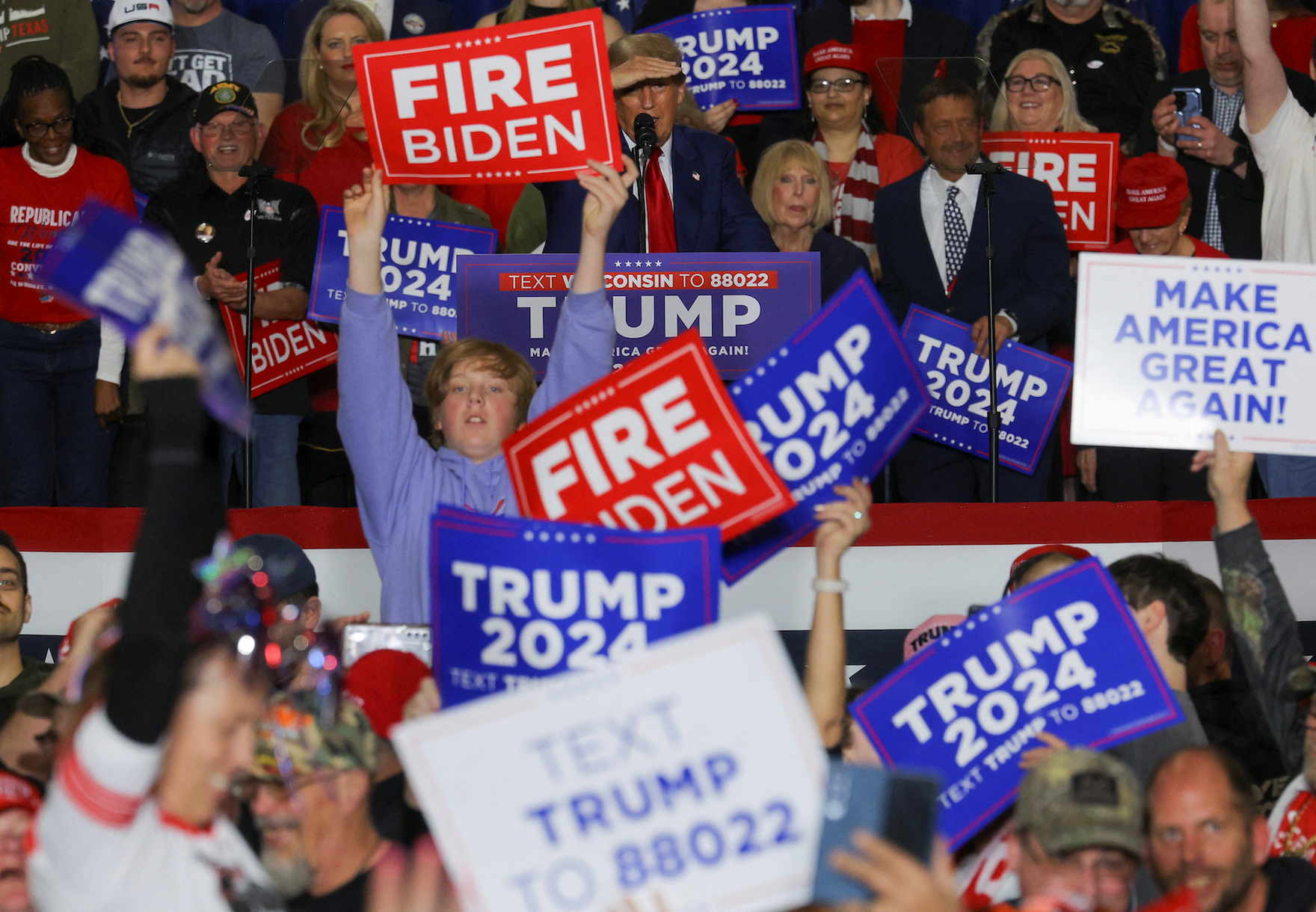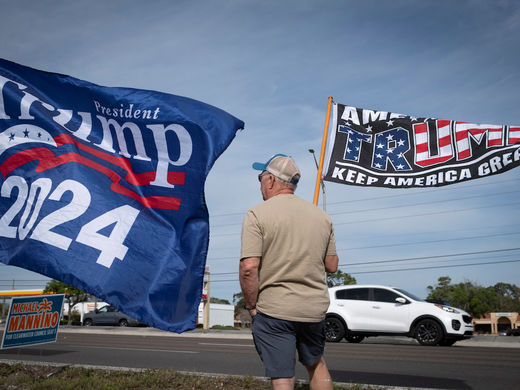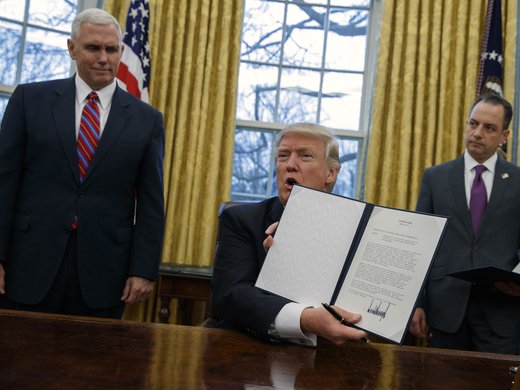Recent polling showing Donald Trump leading President Joe Biden in the race for the White House has reanimated anxiety over what a second Trump administration could entail across a range of policy areas. The fact that most of these results lie within sampling margins of error does little to reduce this unease, which can be expected to build, should Trump continue to lead in public opinion polls as election day approaches. A key concern is the threat posed to North American free trade by the re-election of an imprudent, impetuous president with strong nativist convictions.
This concern is warranted, given the review of the existing trade agreement scheduled for 2026. Early in his first term, Trump threatened to rip up the North American Free Trade Agreement (NAFTA), which he claimed, contrary to the available evidence, was a very bad deal for the United States. That was largely theatre for his populist audience. And in the end, a new agreement that preserved the original NAFTA was negotiated. As Senator Chuck Grassley put it at the time, 95 percent of the new agreement was in the original.
Indeed, a clause-by-clause comparison of the two could lead a cynic to the dyspeptic conclusion that the biggest outcome of renegotiation was the name change from NAFTA to the United States-Mexico-Canada Agreement (USMCA), giving the United States top billing in US branding. (The Government of Canada refers to the agreement as the Canada-United States-Mexico Agreement, or CUSMA.)
A more charitable interpretation is that the renegotiation process was beneficial. Long-standing irritants, including labour standards and rules of origin for the auto sector, were addressed, while new issues arising from the growth of e-commerce and the commercialization of data were incorporated into the revised agreement. This benign outcome was the result of long, tortuous negotiations by American, Canadian and Mexican trade policy professionals who worked to preserve the benefits of NAFTA and limit the damage posed by erratic decisions coming from the White House — not because of some well-thought-out strategy. In other words, it was an effort to minimize the potential damage from Trump-inflicted wounds, as opposed to maximizing gains from trade for all partners.
There is no guarantee that a similar felicitous outcome could be expected under a second Trump administration. More likely, a period of uncertainty would prevail in the period leading to the 2026 review process. Indeed, the possibility that the former president may be re-elected in November may already be costing the North American economy.
That’s because unanticipated shifts in key policy frameworks can greatly affect the profitability of business plans based on a particular policy regime. Uncertainty can therefore act as a tax on long-term decision making. Confronted with a possible post-election rift in trade relations, firms may exercise the “option value of waiting,” deferring long-term investment decisions until possible shifts in policy come into focus. The results of this option-value effect are twofold: lower investment in the short term, and weaker economic performance over time, as productivity gains that such investment would have generated are lost.
Admittedly, going beyond hypotheticals to assess the probable policy initiatives of a second Trump administration is a difficult exercise. The former president has few readily identifiable intellectual positions on which to assess possible policy shifts. But one thing is clear: he is not wedded, if not actively hostile, to the long-standing policy paradigm of global freer trade that, for the past eight decades, has guided presidents from both parties. Although that paradigm can be criticized in its hyper-globalization form, which has led to insufficient attention to the impact of trade on inequality, it has opened markets for US firms, raised Americans’ living standards and buttressed international security. Trump’s approach to policy, by contrast, is purely transactional. It is one focused on short-term “wins” that bolster his standing with his political base and other groups from which he craves validation.
Rather than a display of genuine angst about US jobs lost to offshoring as a result of trade liberalization, for example, Trump’s first-term threat to kill NAFTA was more likely motivated by a desire to prove he could negotiate a better deal, given his self-assessed credentials as a master bargainer. At the same time, the former president views trade from a zero-sum perspective: A “win” for the United States must, he believes, entail a loss for the other partners. And if others benefit, it must come at the expense of the United States. This perspective is, of course, diametrically opposed to the very basis of voluntary trade — mutually beneficial exchange. To the extent it does explain his approach to trade negotiations, this magnifies the risks to North American integration from a Trump 2.0 administration, should the former president once again set his sights on “getting a better deal” for America.
There are three key challenges.
First, the USMCA entered into force in July 2020, that is, at the height of the COVID-19 pandemic. The ensuing three years were marked by public health lockdowns, severe supply-side disruptions and the introduction of extraordinary macroeconomic policy responses that likely distorted market signals.
Because nothing about this period can be considered “normal,” any attempt to evaluate how the USMCA has performed, or is likely to perform under “normal” conditions, is enormously uncertain. This experience contrasts with the frame for the renegotiation of NAFTA, which drew on roughly a quarter-century of implementation. And without a clear understanding of how the USMCA is actually operating, it could be difficult — if not impossible — to identify mutually beneficial gains from renegotiation in the context of the review process scheduled for 2026.
If left to the trade professionals, this ignorance would not necessarily be a problem. But if the review is politicized by a second Trump administration intent on getting a better zero-sum deal for the United States, all bets are off. It’s unlikely that even the most seasoned trade negotiators could craft a clear policy “win” for one party without doing real damage to the foundations of North American economic integration.
The second challenge likewise reflects the effects of the pandemic. Supply-side disruptions resulting from that prolonged shock prompted a re-evaluation of highly articulated “just-in-time” supply chains that distribute production around the globe. Although it’s premature to declare the end of globalization, some shortening of supply chains in pursuit of more resilient “just-in-case” supply seems likely. Evidence is already accumulating, with 2023 exports from Mexico to the United States surpassing those from China for the first time in 20 years. Uncertainty about the trade rules governing North American integration could disrupt this process and set back North American prosperity.
The third looming challenge to North American free trade is that this near shoring of production, driven by profit maximization and risk management, has been accompanied by geopolitically motivated, so-called friend shoring and the balkanization of the global economy through restrictions on technology transfers and trade in sensitive products. However legitimate national security objectives may be, they can cause collateral damage if used as a pretext for old-style protectionism. It’s worth recalling that just five weeks after the USMCA went into force in July 2020, the Trump administration re-imposed tariffs on Canadian aluminum, citing national security concerns. Predictably, Canada retaliated with carefully targeted tariffs on US goods.
This episode highlights just some of the risks a possible second Trump administration poses to North American free trade. In an exhaustive 382-page analysis conducted prior to congressional approval, the United States International Trade Commission (USITC) found the USMCA would have small negative effects on US output and jobs unless it reduced uncertainty about future tariff rates. (This finding is not surprising: since most tariffs had already been largely eliminated under NAFTA, any gains from USMCA provisions related to enforcement and trade facilitation were likely to be second-order and offset by losses associated with new rules of origin in the auto sector that put North American auto production at a competitive disadvantage to that of other regions.)
With lower uncertainty factored into the USITC analysis, those losses became small gains. But ironically, the erratic policy decisions taken by the Trump administration likely destroyed any incipient benefits offered by the renegotiated agreement.
The conclusion is clear. While the policies Trump would implement, were he re-elected, are impossible to predict with any certainty, we can expect that a second Trump administration would foment enormous uncertainty with respect to key policy frameworks, including in North America. That alone would set back the goal of shared prosperity that motivated the original NAFTA signed three decades ago.



